
Nursing Duties
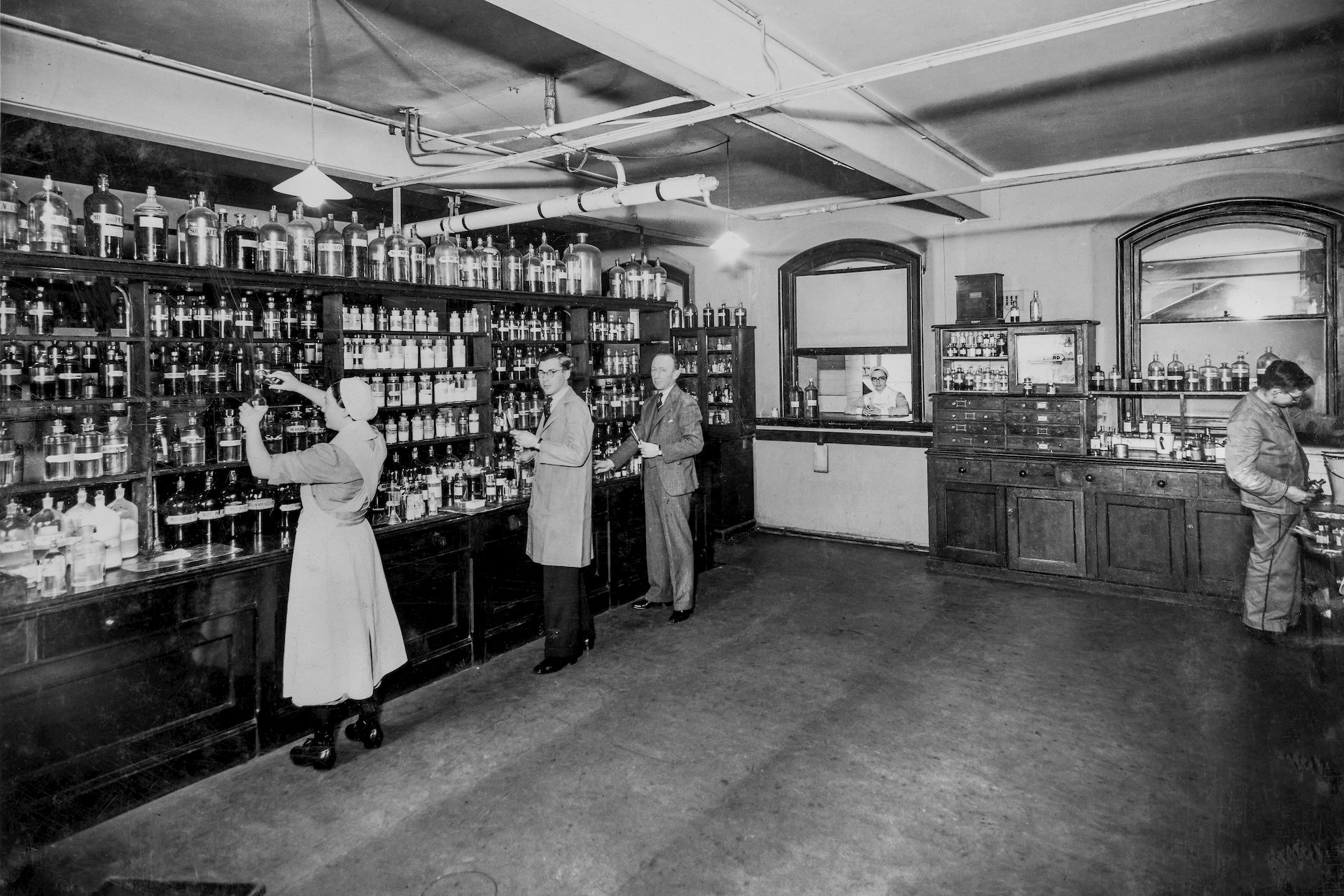
Nursing was considered very hard work and duties included poulticing every four hours, tongue scraping, cleaning tracheotomy tubes with carbolic feathers, use of steam kettles. Enteric patients were considered of primary importance and required back sponging and rubbings, with mouths cleaned four-hourly. Typhoid patients in large numbers took up most of the nursing duties at RPA in the years leading up to WWI, and on this scale was said to be hard nursing, with four-hourly spongings. From 1910 typhoid vaccinations were provided to nurses.
One nurse's pre-WWI recollections,
'I felt the patients were splendidly uncomplaining. One could not but have favourites among them for 70 odd years ago patients stayed longer in hospital than nowadays; one nursed them and learned often about their personal joys and sorrows. I recall some nurses had a real gift of lightening the ward by their presence and most of us had a kindly personal feeling for our patients'.
'Doing backs' remained part of nurses' duties well into the 1960s. As recalled by one trainee,
'...then there was the back tray and leaning to prevent pressure sores. The tray contained methylated spirits, zinc cream and a tin of powdered starch. Silicone cream was also used but mostly for patients who were confined to bed and were difficult to roll over. Personally, I loved doing backs... it gave me the opportunity to give them a good massage and to get to know the patient better'.
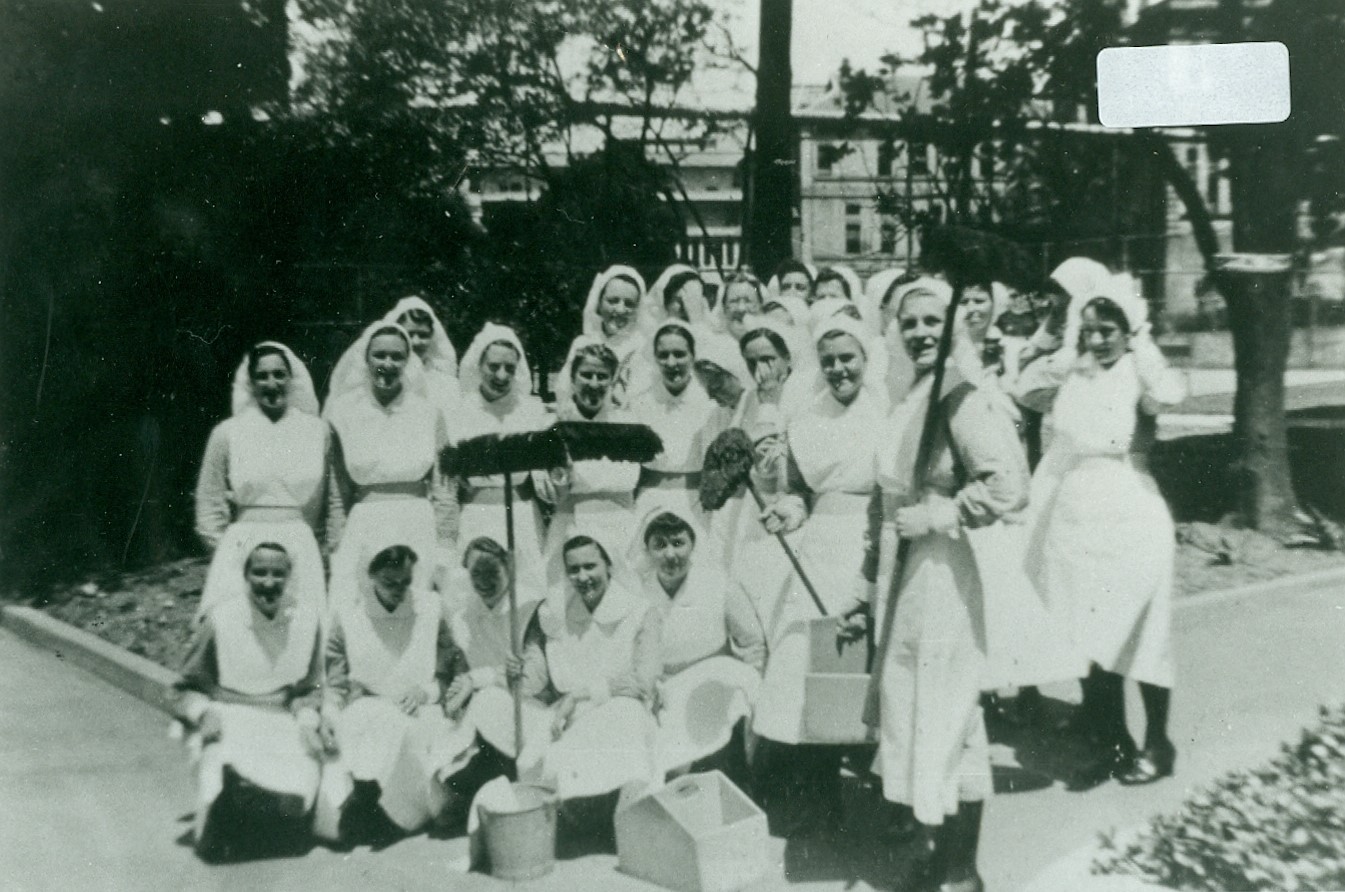
The nursing of diabetic patients increased during the 1920s when insulin became available, with many patients admitted in diabetic comas. Pneumonia cases needed constant nursing and required sponging’s and poultices to relieve temperatures and pain.
Theatre sisters were present during operations and special rules regarding cleanliness existed, with nurses required to count theatre sponges. Their special uniform had a red diagonal band across the chest. Surgical nurses were responsible for dressings, wound care, giving of subcutaneous and intravenous salines and coffee enemata.
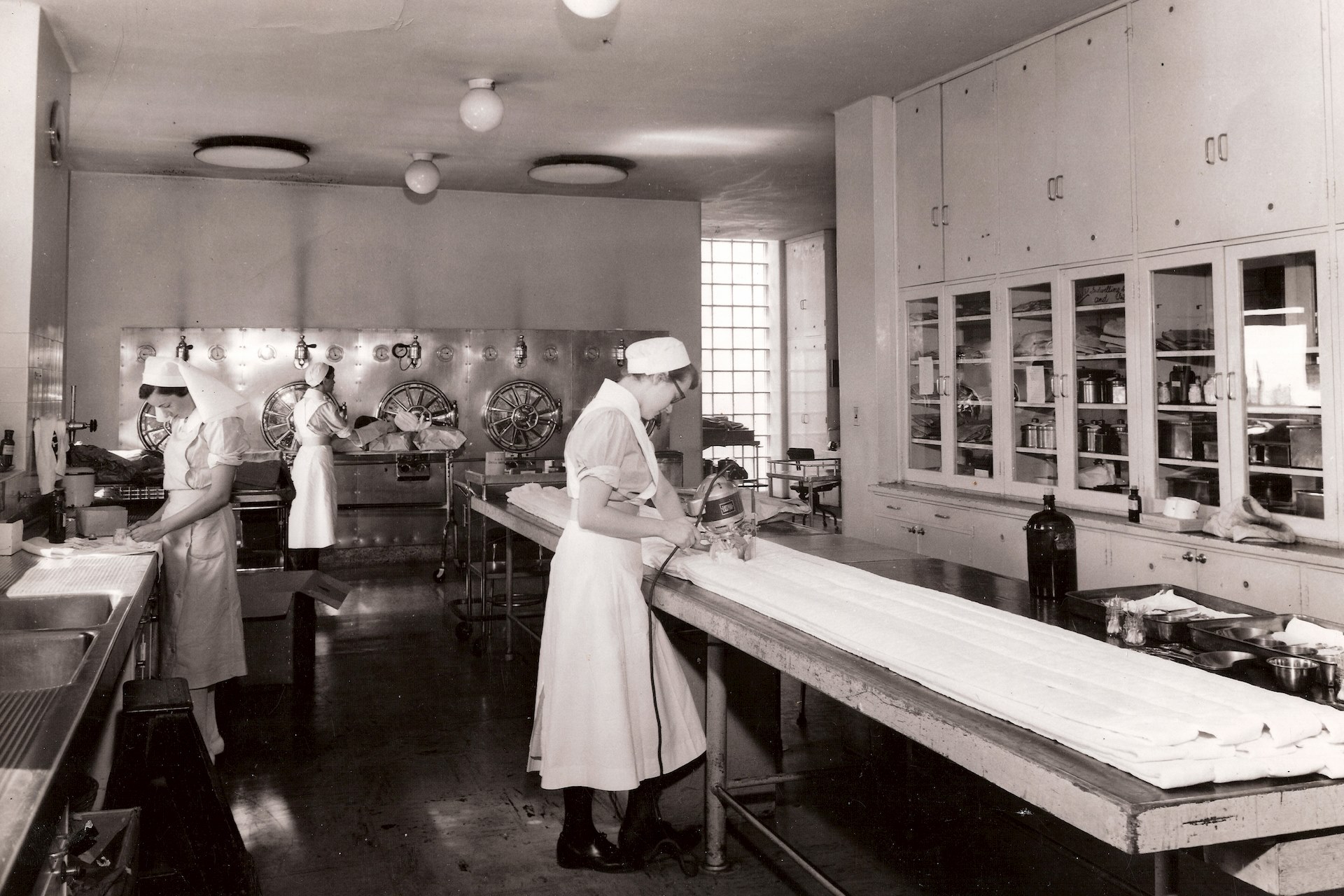
Early nursing duties included sponging's and baths, foments and poultices, cold and hot packs, and ice-cradling. These were generally used for pain relief and temperature reduction instead of drugs. By the 1930s, sulphonamide drugs were more commonplace, with penicillin in general use from 1945.
New fields of treatment at RPA emerged requiring extra nurses including a Chest and Lung Clinic, X-Ray Department, Allergy and Diabetic Clinics, Deep X-Ray Department, large Outpatients' Department, Neurosurgery Ward and Psychiatry Pavilion. Nursing was very demanding as nurses were required to develop new skills in a depleted nursing environment, at a time of tight budgets and great advances in medical treatment.
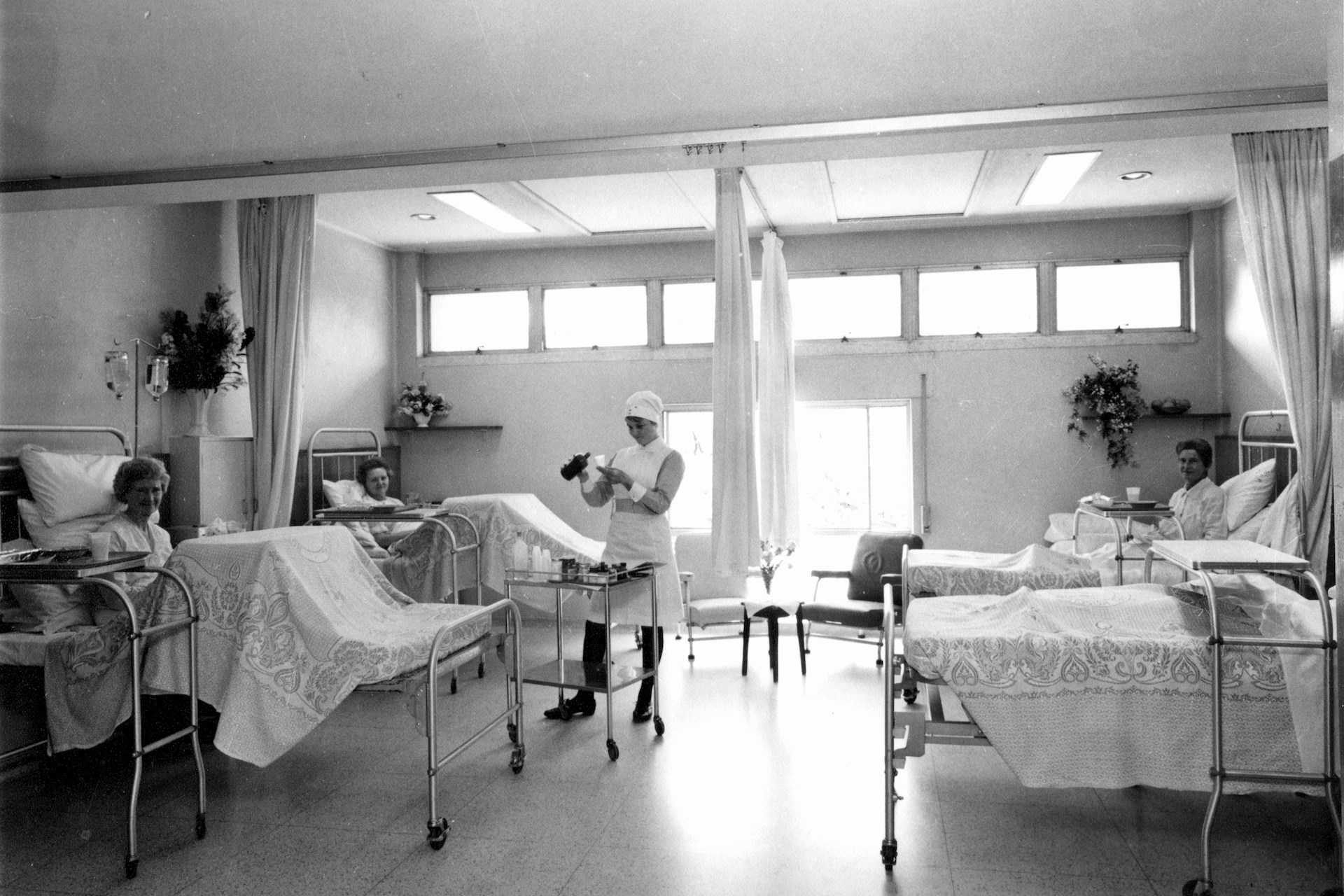
General nursing procedure and ward routine remained largely unchanged from 1882-1932 but was influenced greatly over the next 10 years by the introduction of Preliminary Training Schools and Tutor Sisters.
Prior to the use of penicillin in 1945, venereal disease treatment was prolonged, and distressing for nurses working with women and children. In the 1880s venereal wards were known as 'Lock' wards. Nurses were required for continuous nursing, particularly for babies requiring eye irrigations. Gloves and gowns were worn, and great care taken with dressings to avoid infection.
Ward duties were clearly defined for senior and junior nurses, but there was generally an overlap of duties for care to run smoothly. The senior nurse would write the daily report for patients, give out medications and dangerous drugs including morphine and pethidine. They also did dressings, IVs, blood pressure, catheterising patients, managing patients on respirators, preparing patients for procedures and assisting doctors during lumbar punctures or bone marrow biopsies. Junior nurses performed tasks learnt in Preliminary Training School while second year nurses also admitted and discharged patients, gave intragastric tube feeding, took blood pressure, gave injections, and enemas, looked after dressings and IVs and prepared patients for theatre.
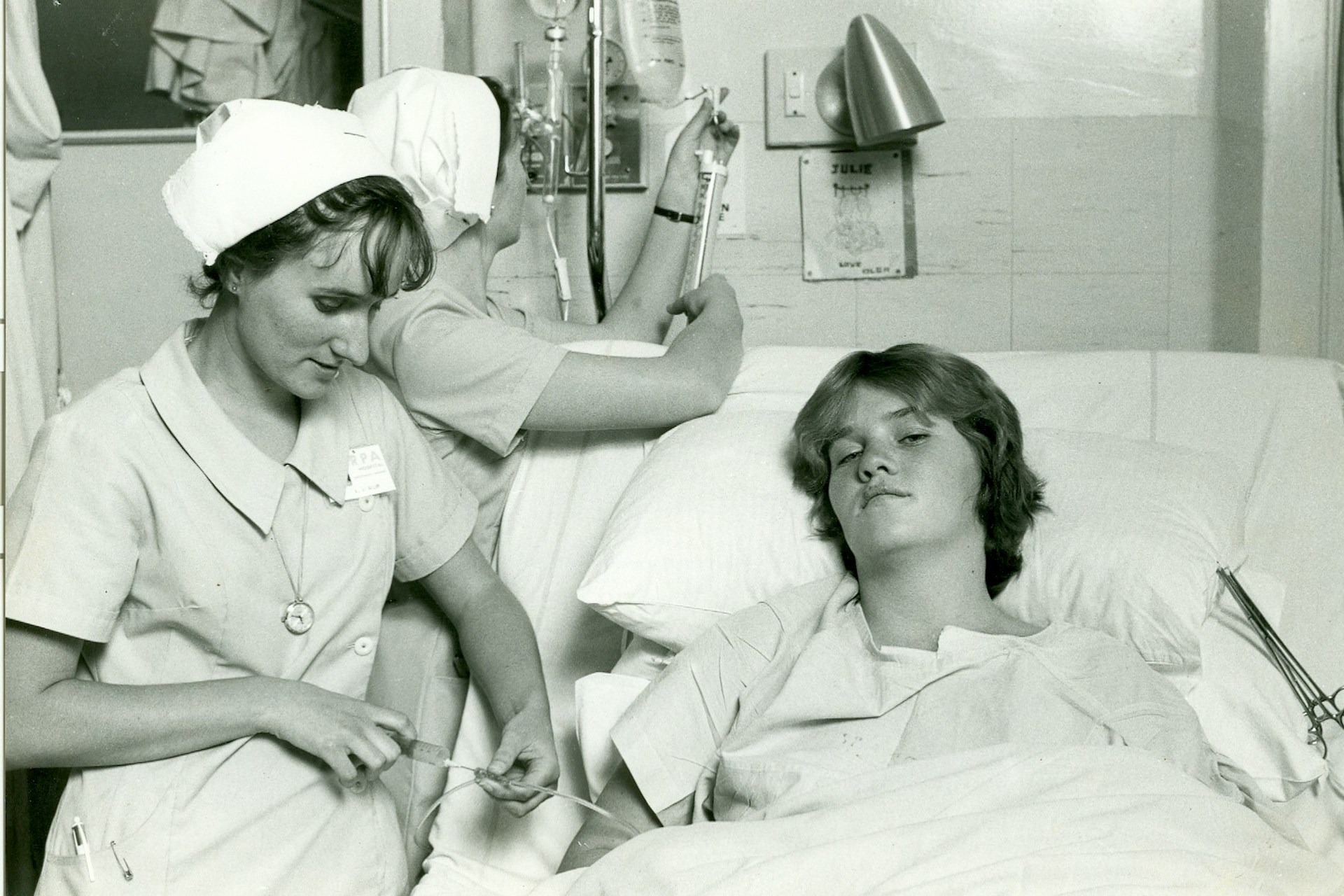
Sources: 'The First Fifty Years' by Dorothy Mary Armstrong (1965); 'The Second Fifty Years' by Helen Croll Wilson (2000); The Life and Times of Royal Prince Alfred Hospital, Sydney, Australia by Muriel Knox Doherty (1996); Australasian Trained Nurses' Journal; The Sydney Morning Herald; RPA Museum collection.